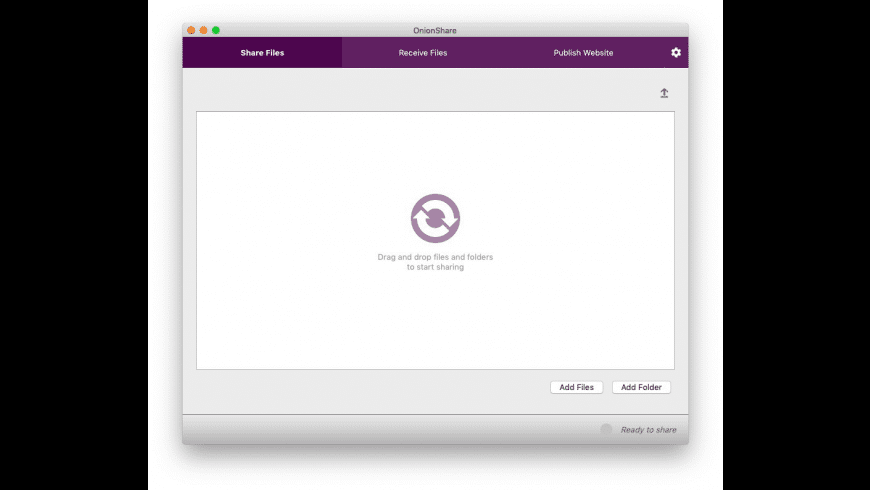
The nonwork hours limit will be used at all other times. You can define the range of work days and work hours during which the work hours bandwidth limit should be applied. Throttling uses two settings, work hours and nonwork hours, to regulate the use of the network bandwidth during backup operations. After you select the Enable internet bandwidth usage throttling for backup operations check box, you can configure how the agent uses the network bandwidth when it's backing up or restoring information. The Throttling tab allows for control of network usage during specific day and time intervals.

There are three tabs with settings that you can change as necessary. In the Actions pane (on the right), select Change Properties.
ONIONSHARE 1.0 WINDOWS
On the File menu, select Add/Remove Snap-in, and then add Windows Server Backup for Local computer.Įxpand the Windows Server Backup tree, and then select Backup. Method 1: Use the MMC snap-in management console Use one of the following methods to configure the Throttling settings. Step 3: Throttling bandwidth usage for replication The default value with which the agent is configured is 4 and the maximum supported value is 32. Use Registry Editor to locate the following registry key, and then add the following registry entry, or change it if the value already exists: HKEY_LOCAL_MACHINE\SOFTWARE\Microsoft\Windows Azure Backup\Replication Step 1: Increase the bandwidth usage for replicating into Azure After these configurations are implemented, you should monitor network bandwidth usage for several days to make sure that the configured settings optimize your usage. The Microsoft Azure Recovery Services Agent that's installed on the Hyper-V host for on-premises VMM site to Azure or on-premises Hyper-V site to Azure is configured to use the default internet bandwidth usage settings.Īn administrator can configure individual Hyper-V hosts to use different network bandwidth settings. Original product version: Azure Backup Original KB number: 3056159 Manage the network bandwidth for on-premises virtual machines
ONIONSHARE 1.0 CODE
If you can make your site load only 'local' content relative to your website code and not load third party, external resources (like CSS or Javascript, Font files or images from CDNs etc), that is the most secure solution.When you enable on-premises to Microsoft Azure protection by using Azure Site Recovery(ASR), the network bandwidth can be managed by using the methods in this article. There are lots of guides online, presumably you have already searched for 'Content Security Policy: The page’s settings blocked the loading of a resource at data:' to learn more This is beyond OnionShare's scope to teach you about Content Security Policy headers, as it's not specific to OnionShare. You can customize the Content-Security-Policy in the same advanced settings to be specifically suited to your site (without disabling the whole thing), but it sounds like you don't really know about CSP, as you haven't understood the error the browser is telling you.

You can try ticking the checkbox 'Disable Content Security Policy' in the advanced settings of the Website Mode tab, but it makes your site potentially insecure and is not recommended. This means your site's HTML is trying to load third party content from external websites. Your screenshot and those error messages are telling you that your website wants to load content that the default 'Content-Security-Policy' prevents you from doing so.


 0 kommentar(er)
0 kommentar(er)
